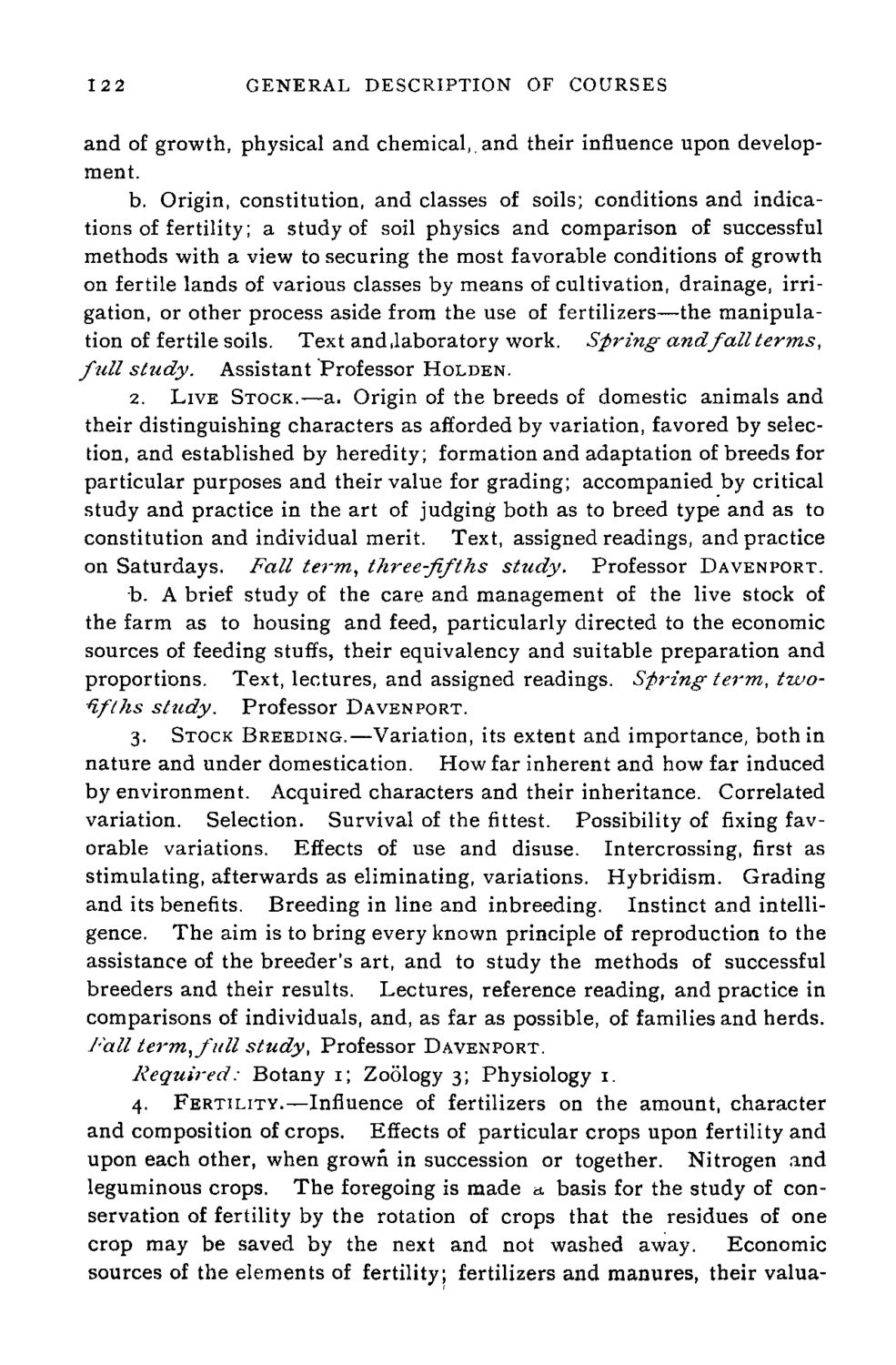| |
| |
Caption: Course Catalog - 1896-1897
This is a reduced-resolution page image for fast online browsing.

EXTRACTED TEXT FROM PAGE:
122 GENERAL DESCRIPTION OF COURSES and o£ growth, physical and chemical, and their influence upon development. b. Origin, constitution, and classes of soils; conditions and indications of fertility; a study of soil physics and comparison of successful methods with a view to securing the most favorable conditions of growth on fertile lands of various classes by means of cultivation, drainage, irrigation, or other process aside from the use of fertilizers—the manipulation of fertile soils. Text and .laboratory work. Spring and fall terms, full study. Assistant Professor HOLDEN. 2. LIVE STOCK.—a. Origin of the breeds of domestic animals and their distinguishing characters as afforded by variation, favored by selection, and established by heredity; formation and adaptation of breeds for particular purposes and their value for grading; accompanied by critical study and practice in the art of judging both as to breed type and as to constitution and individual merit. Text, assigned readings, and practice on Saturdays. Fall term, three-fifths study. Professor DAVENPORT. b. A brief study of the care and management of the live stock of the farm as to housing and feed, particularly directed to the economic sources of feeding stuffs, their equivalency and suitable preparation and proportions. Text, lectures, and assigned readings. Spring term, tzvoHflhs study. Professor DAVENPORT. 3. STOCK BREEDING.—Variation, its extent and importance, both in nature and under domestication. How far inherent and how far induced by environment. Acquired characters and their inheritance. Correlated variation. Selection. Survival of the fittest. Possibility of fixing favorable variations. Effects of use and disuse. Intercrossing, first as stimulating, afterwards as eliminating, variations. Hybridism. Grading and its benefits. Breeding in line and inbreeding. Instinct and intelligence. The aim is to bring every known principle of reproduction to the assistance of the breeder's art, and to study the methods of successful breeders and their results. Lectures, reference reading, and practice in comparisons of individuals, and, as far as possible, of families and herds. J'all term,full study, Professor DAVENPORT. Required: Botany 1; Zoology 3; Physiology 1. 4. FERTILITY.—Influence of fertilizers on the amount, character and composition of crops. Effects of particular crops upon fertility and upon each other, when grown in succession or together. Nitrogen and leguminous crops. The foregoing is made a basis for the study of conservation of fertility by the rotation of crops that the residues of one crop may be saved by the next and not washed away. Economic sources of the elements of fertility; fertilizers and manures, their valua-
| |